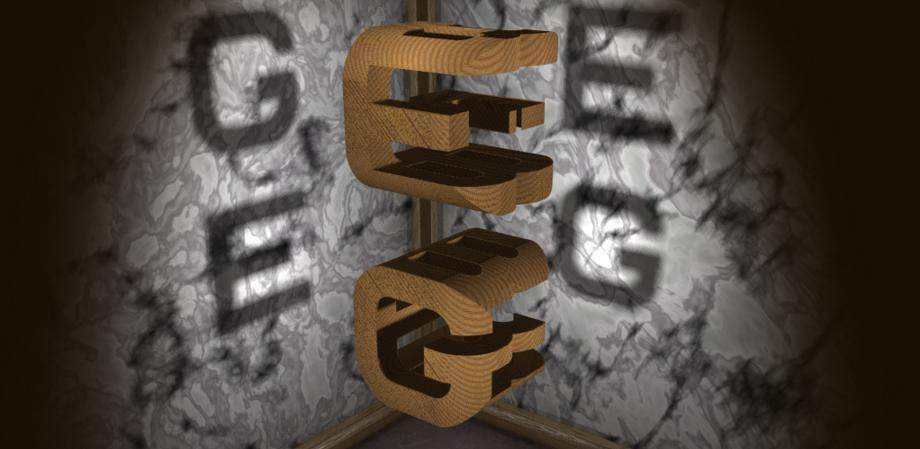The Geometry of Shadows and Light
- Roger Mansuy, Mathematician
- 12 avr. 2019
- 3 min de lecture

[ C H R O N I C L E ]
For almost forty years, the cult book Gödel, Escher, Bach: An Eternal Golden Braid has fascinated thousands of readers around the world. The beautifully-written text reflects on consciousness, intelligence (artificial?), paradoxes, analogy, reductionism, etc., with passages that are written like fables or fairy tales. The cover of this work by Douglas Hofstadter is now mythical: it depicts a higgledy-piggledy solid, lit by three perpendicular light sources casting three shadows that form the letters G, E and B, the initials of the title. Invariably, when examining the cover illustration, one wonders how or even if it is possible to obtain a solid with these three shadows. Once convinced however, numerous questions rise : can any shadows be obtained? Can more shadows be cast with light from different directions? Can a solid be built that casts various shadows such as the letters of your name or the profiles of your friends?
These geometrically delicate questions and their solutions come from a theorem that the Briton Kenneth Falconer proved in 1986. The answers are all affirmative, although with a certain number of “almosts”: if we want desired shapes for the shadows in all directions, then an object does exist for which the shadows, in almost all directions, are almost identical to the previously fixed shapes. For non-mathematicians, this “almost” may seem incomplete; however, it does not limit things and stems from measure theory, developed at the start of the 20th century.
Let us illustrate this with a concrete example. Take any image and change one point on it – be careful, this means a point in the mathematical sense, i.e. “without a surface”, and not a pixel. The image obtained is almost the same as the original. Repeating the operation for other points, you can change the image unnoticeably. Both images coincide everywhere, except for a negligible zero “surface” or in technical terms, of measure zero: they are almost equal everywhere.
In the projection problem solved by Kenneth Falconer, the desired image (except for part of the surface of measure zero) is obtained in all directions (except a negligible set of them); the mathematical theory indicates that there is a satisfactory physical solution to the problem in that, visually, nothing distinguishes the shadow cast from the desired image (they are almost identical everywhere). Fun applications can be imagined using this result. Let us consider various times, that a digital clock can display as images: 00:00, 00:01 until 23:59. Using the theorem, we can construct an object whose shadows in 24 times 60 = 1,440 dimensions are exactly these 1,440 “images”. As long as these directions are correctly adjusted in line with the sun, an object can be obtained whose shadow tells the time, a sort of digital sun dial!
This fascinating object – a 3D printed version placed under a lamp that tells the time every 10 minutes, or 144 shadows – can also be handled in the exhibition entitled “Sous la surface, les maths” (“Maths under the Surface”), designed by the Institut Henri-Poincaré, under the guidance of scientist Olivier Druet, and currently on show at the Museum of Arts and Trades in Paris. As well as this curious sun dial, you can also discover a whole range of maths issues around the representation and understanding of surfaces, including videos, from mapping to graphics in video games. A great outing with the family or school if you are passing through Paris, until it goes on the road!
The exhibition “Sous la surface, les maths” is on at the Musée des arts et métiers, in Paris, until 7th July 2019. More information here.
> AUTHOR
Roger Mansuy
Mathematician
Roger Mansuy teaches at Louis-Grand Lycée in Paris, and is a member of the French Committee for Maths Teaching (CFEM).


Commentaires